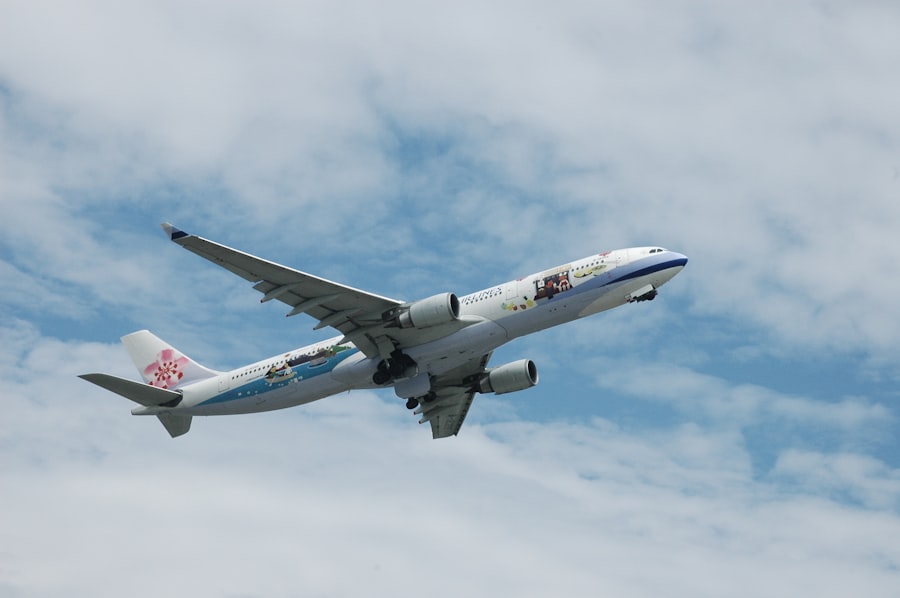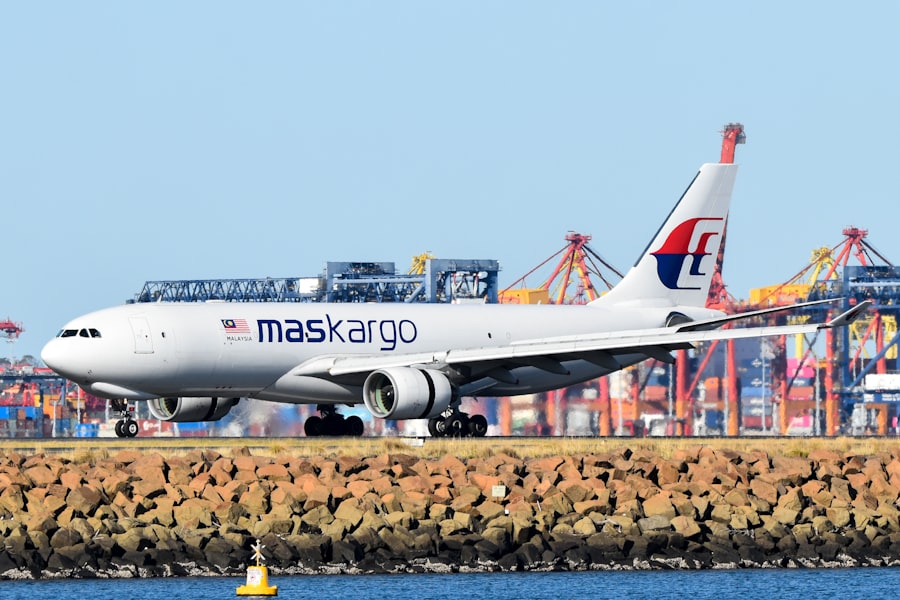The Airbus A330, a twin-engine wide-body aircraft, has become a cornerstone of modern aviation since its introduction in the early 1990s. Designed for medium to long-haul routes, the A330 has garnered a reputation for its reliability, comfort, and operational efficiency. With its first flight taking place in 1992 and subsequent entry into service in 1994, the A330 was developed to meet the growing demand for air travel while providing airlines with a versatile platform capable of serving various markets.
The aircraft’s design philosophy emphasizes passenger comfort and operational flexibility, making it a popular choice among airlines worldwide. Over the years, the A330 has evolved through various iterations, adapting to changing market needs and technological advancements. Its ability to accommodate different passenger configurations and cargo loads has made it a favorite among both passenger and freight operators.
The aircraft’s success is reflected in its impressive sales figures, with thousands of units delivered globally. As airlines continue to seek efficient and reliable aircraft to meet the demands of an ever-growing passenger base, the A330 remains a significant player in the commercial aviation landscape.
Key Takeaways
- The Airbus A330 is a wide-body, twin-engine jet airliner designed for long-haul flights, with a range of up to 13,430 kilometers.
- The A330 features a modern and spacious cabin design, with options for different seating configurations to accommodate various passenger and cargo needs.
- The A330 is known for its versatility, being used for both passenger and cargo transportation, as well as military and aerial refueling applications.
- With its fuel-efficient engines and advanced aerodynamics, the A330 offers excellent performance and cost-effectiveness for airlines.
- The A330 comes in several variants, including the A330-200 and A330-300, with different configurations for seating, range, and payload, catering to different market needs.
Design and Features of the Airbus A330
The design of the Airbus A330 is characterized by its sleek fuselage and advanced aerodynamics, which contribute to its overall performance and efficiency. The aircraft features a wide cabin that allows for various seating configurations, accommodating anywhere from 250 to over 400 passengers depending on the model and layout chosen by the airline. The spacious interior is designed with passenger comfort in mind, featuring larger windows, improved lighting, and quieter cabins compared to older aircraft models.
The A330’s cabin is also equipped with modern in-flight entertainment systems, enhancing the overall travel experience. One of the standout features of the A330 is its advanced wing design, which incorporates winglets that improve fuel efficiency by reducing drag during flight. The wings are constructed using composite materials that not only reduce weight but also enhance structural integrity.
Additionally, the aircraft is powered by two high-bypass turbofan engines, typically the Rolls-Royce Trent 700 or the Pratt & Whitney PW4000 series, which provide excellent thrust while maintaining low noise levels. The combination of these design elements results in an aircraft that is not only aesthetically pleasing but also highly functional and efficient.
Versatility of the Airbus A330

The versatility of the Airbus A330 is one of its most significant advantages, allowing it to operate across a wide range of routes and missions. Airlines can configure the aircraft for various purposes, including passenger transport, cargo operations, and even military applications. This adaptability makes the A330 an attractive option for carriers looking to optimize their fleets for different market demands.
For instance, airlines can choose to operate high-density configurations for short-haul routes or more spacious layouts for long-haul flights, catering to diverse passenger needs. In addition to passenger transport, the A330 has been successfully adapted for cargo operations through the A330-200F variant, which is specifically designed for freight transport. This freighter version features a large cargo door and a reinforced floor to accommodate heavy loads, making it suitable for transporting everything from perishables to oversized cargo.
Furthermore, some military operators have adapted the A330 for aerial refueling and transport missions, showcasing its flexibility beyond commercial aviation. This multifaceted capability ensures that the A330 remains relevant in an ever-evolving aviation landscape.
Efficiency and Performance of the Airbus A330
| Metrics | Efficiency and Performance |
|---|---|
| Maximum Takeoff Weight | 242 tonnes |
| Maximum Range | 13,334 km |
| Cruise Speed | Mach 0.82 |
| Fuel Efficiency | 0.59 L/passenger per 100 km |
| Maximum Seating Capacity | 440 passengers |
The efficiency of the Airbus A330 is one of its defining characteristics, making it a preferred choice for airlines seeking to minimize operational costs while maximizing profitability. The aircraft’s advanced aerodynamics and lightweight construction contribute to its impressive fuel efficiency, allowing operators to achieve lower per-seat costs compared to older aircraft models. The A330’s engines are designed to provide optimal performance while adhering to stringent environmental regulations, resulting in reduced emissions and noise levels.
Performance-wise, the A330 boasts impressive range capabilities, with certain variants capable of flying over 6,000 nautical miles without refueling. This extended range allows airlines to serve long-haul routes without the need for intermediate stops, enhancing operational efficiency and providing passengers with more direct flight options. Additionally, the aircraft’s climb rate and cruising speed are competitive within its class, enabling it to maintain schedules effectively even on longer journeys.
The combination of these performance attributes positions the A330 as a reliable workhorse in both passenger and cargo operations.
Airbus A330 Variants and Configurations
The Airbus A330 family consists of several variants tailored to meet specific operational requirements. The most notable variants include the A330-200 and A330-300, each designed with different capacities and range capabilities. The A330-200 is known for its shorter fuselage and increased range, making it ideal for long-haul routes with lower passenger demand.
In contrast, the A330-300 features a longer fuselage that allows for higher passenger capacity, making it suitable for high-density routes. In addition to these primary variants, Airbus has introduced several specialized configurations such as the A330-800neo and A330-900neo as part of its A330neo program. These new-generation models incorporate advanced technologies such as more efficient engines and improved aerodynamics, further enhancing fuel efficiency and performance.
Airlines can also customize their A330 interiors based on market demands, offering various seating arrangements ranging from all-economy layouts to premium configurations with lie-flat seats in business class. This level of customization ensures that airlines can tailor their offerings to meet specific customer preferences while maximizing revenue potential.
Airbus A330 in the Market

The Airbus A330 has established itself as a formidable competitor in the commercial aviation market, with numerous airlines around the world incorporating it into their fleets. Its blend of efficiency, versatility, and passenger comfort has made it a popular choice among both legacy carriers and low-cost airlines alike. Major operators such as Delta Air Lines, Qatar Airways, and Turkish Airlines have embraced the A330 for its ability to serve a variety of routes effectively.
In recent years, the demand for wide-body aircraft like the A330 has remained strong despite challenges posed by global events such as economic downturns and the COVID-19 pandemic. Airlines have recognized the importance of having a flexible fleet capable of adapting to changing travel patterns and passenger preferences. As air travel continues to recover post-pandemic, many airlines are looking to reintroduce or expand their A330 operations to meet growing demand on international routes.
Future of the Airbus A330
Looking ahead, the future of the Airbus A330 appears promising as airlines continue to seek efficient solutions for their fleets. The introduction of the A330neo variants represents a significant step forward in terms of technology and performance enhancements. With advancements in engine efficiency and aerodynamics, these new models are positioned to compete effectively against newer aircraft from rival manufacturers while retaining the core attributes that have made the A330 successful.
Moreover, as sustainability becomes an increasingly critical focus within the aviation industry, efforts are underway to explore alternative fuels and technologies that could further enhance the environmental performance of existing aircraft like the A330. Initiatives aimed at reducing carbon emissions and improving fuel efficiency will likely play a crucial role in shaping the future operational landscape for this aircraft family. As airlines adapt to evolving market conditions and regulatory pressures regarding sustainability, the adaptability of the A330 will be instrumental in ensuring its continued relevance in commercial aviation.
The Impact of the Airbus A330
The impact of the Airbus A330 on commercial aviation cannot be overstated; it has transformed how airlines operate medium to long-haul routes while setting new standards for passenger comfort and operational efficiency. Its versatile design allows it to serve various markets effectively, from high-density routes to specialized cargo operations. As airlines navigate an ever-changing landscape marked by technological advancements and shifting consumer preferences, the A330 remains a vital asset in their fleets.
With ongoing developments such as the introduction of new variants and enhancements aimed at improving sustainability, the Airbus A330 is poised to maintain its significance in aviation for years to come. Its legacy as a reliable workhorse continues to shape airline strategies worldwide while contributing positively to passenger experiences across global air travel networks.


